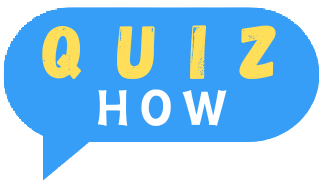Adapted from Chapter 5 of How to Start a Successful Creative Agency, “Starting Your Freelance Business”
So, you’re thinking about ditching your 9-to-5 job in marketing, advertising, or communications to go full-time freelancing. Whether you’re a writer, graphic designer, front-end developer, or filmmaker, you might be wondering how to make the switch.
The challenge is, most people can’t just quit their job and jump straight into freelancing. Maybe you’ve already started freelancing on the side, but it’s not yet enough to support yourself.
This Trick Helped Me Go From Full-Time to Freelance
I used to be a full-time copywriter with a side hustle in freelancing during evenings and weekends. Then, I got a lucky break that might just work for you too.

A friend of mine, who was an executive at a mid-sized agency, gave me a call with an intriguing offer.
Find a Half Full-Time Job
He asked if I’d be interested in joining the agency, but they couldn’t afford a full-time salary. Instead, he offered me a part-time gig: working at the agency for just half the day.
Here’s the deal: I’d get an office, a computer, and access to a creative department assistant from 9 to 12. They’d keep me busy during those hours and pay me a set salary. If they needed me for extra hours, I’d be paid by the hour for the time I worked, based on timesheets.
The best part? I could use the office for the rest of the day to build up my freelance business.
Half-Day Full-Time, Plus Half-Day Freelance—An Easy Transition
This setup was perfect for me. I saw it as working full days—half of it for them, and half for myself.
I enjoyed having an office to go to (a quick subway ride, no car commute). It gave me structure and discipline.
Plus, my half-day salary was actually more than half of what I used to make, so it felt like a raise.
I spent my afternoons building up my freelance work, making calls, and connecting with people.
One day, a printing rep came by and said he had a client who needed writing help. He asked if I’d be interested in meeting them.
I definitely was.
That one connection led to so much writing work that I ended up leaving my half-day job and went full-time with freelancing from home.
I did that for six years until I got so busy that I decided to start my first agency. I brought all my freelance clients with me.
Don’t Get Two Half-Day Jobs
To make this work, you need to make sure you have enough time to grow your freelance business. That means avoiding taking on two half-day jobs that will fill up all your time.

Remember, your goal is to switch to full-time freelancing. Your half-day job is just a stepping stone to help you get there.
How Do You Start This Type of Transition to Freelance?
If you’re currently working full-time, a good place to start might be with your current employer. See if they’d be open to a similar arrangement. They could save money by paying you for half days plus an hourly rate for any extra work, while still keeping you on board.
If that doesn’t seem feasible, try reaching out to colleagues, former contacts, or agencies you’re interested in. They might find your proposal intriguing. You can also connect with other freelancers to partner on projects, spread the word on social media, or even contact a headhunter for opportunities.
What You Need to Make This Transition Work
Ideally, you should be sure you can manage on a half-salary plus whatever you earn from freelancing while you build your business. It’s a good idea to have some savings or a partner with a steady income to help out. Just be prepared that for at least a year or more, your income might be lower.
Take some time to think it through and see if this shift to freelancing could work for you.
How to Build Your Freelance Client Base
To make this work, you’ll need to find enough clients to keep you busy for half of each day. Once you reach that point, you can start thinking about going full-time with freelancing. This might mean getting more clients or finding a few clients who give you a lot of work (my personal preference).

Here are some tips to help you build your client base:
- Network: Go to industry events, join professional groups, and connect with potential clients and other freelancers in your field.
- Cold Email: If you spot a company looking for software developers, reach out to them with a brief intro and a pitch for your services. Be specific about what you offer.
- Create a Portfolio: Put together a portfolio of your best work that you can share with potential clients.
Manage Your Time
Managing your own time can be tricky, but here are some tips to help you do it effectively:
- Create a Schedule: Plan out your workday, including when you’ll tackle projects and take breaks. Don’t forget to add in time for administrative tasks too.
- Set Boundaries: Make it clear to your clients when you’re available and when you’re not. You don’t want to be fielding calls late at night or on weekends.
- Use Time-Tracking Tools: There are lots of time-tracking tools out there. Look for one that fits your needs and check out free trials to get started. These tools help you see how long tasks and projects take, so you can make sure you’re charging enough for your time—this is crucial for full-time freelancing.
Invest in Personal Development
Freelancing is a great way to grow personally and professionally. Here are some tips to help you invest in your development:
- Take Courses: Look for online courses or attend workshops to learn new skills and stay current in your field.
- Attend Conferences: Find conferences related to your interests. For example, if you write about health and wellness, go to those conferences. You’ll likely meet more relevant contacts than at general marketing events.
- Seek Mentorship: Look for a mentor who can offer advice and support as you navigate your freelance career. You might find mentors on community sites like Discord or Reddit.
By managing your finances, building your client base, organizing your time, and focusing on personal growth, you can thrive as a freelancer and enjoy the freedom of being your own boss.

New Book For Freelancers
I’ve just released a new book called How to Become a Successful Creative Freelancer. It’s a must-read for freelance writers, designers, developers, filmmakers, and photographers.

Whether you’re just starting out or have been freelancing for years, you’ll find valuable insights in this book.
It’s divided into easy-to-follow chapters, packed with strategies and tips you can start using right away. It’s not just about “what to do,” but also “how to do it.”
Want to Grow An Agency? The Agency Book is For You
If you want tips on how to build and grow your agency, you need to check out How to Start a Successful Creative Agency.
This book is full of great advice to help you kickstart and expand your business.
Seriously, get this book.
“I’m continuing to read @StroteBook and can’t recommend it enough! No matter where you are in your journey, it breaks down how to take your business to the next level. Get. This. Book.” — Macklin Youmans on Twitter
It’s packed with useful information for creatives looking to start and grow their business.


